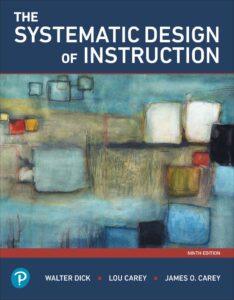By Brant Wilkerson-New
June 16, 2025
User documentation is a critical resource that empowers users to understand, navigate, and maximize the value of a product or service. Whether you’re introducing a new software application, a physical device, or a complex system, documentation bridges the gap between complexity and user experience and knowledge. In this article, we’ll explore what user documentation is, why it matters, the different types, and how to create docs that truly help your audience through effective writing.
So, What Is User Documentation?
User documentation refers to the collection of materials designed to help end users understand and use a product effectively, and at a baseline level, ensure it works.
Documentation can take many forms, including user manuals, quick-start guides, FAQs, knowledge base, and step-by-step instructions. The primary goal is to make information accessible, clear, and actionable so users can achieve their objectives with minimal frustration. Documentation is essential for every product, as it provides the guidance users need, and writing plays a crucial role in making this guidance understandable. A well-documented product is more likely to succeed in the market, as users can quickly learn how to use the product and solve any issues that arise.
The Purpose of User Documentation
The main purpose of user documentation is to support users in using a product. Well-crafted documents reduce the learning curve, minimize support requests, and enhance overall satisfaction. When documentation is clear and comprehensive, users can solve problems independently, discover new features, and make the most of the product’s capabilities. Effective writing ensures that your documents are not only informative but also engaging and easy to follow. A product with strong documentation stands out, as users can unlock the full potential of the product and enjoy a seamless experience.
User documentation also serves as a reference point for troubleshooting and problem-solving. When users encounter issues, they often turn to the provided documents before reaching out to customer support. Effective documentation can significantly reduce the volume of support tickets your customers create, and in turn, improve the efficiency of your support team.
Types of User Documentation
There are several types of documentation, each serving a unique purpose:
- User Manuals: Comprehensive guides that cover all aspects of a product.
- Quick-Start Guides: Concise guides for getting started quickly with a product.
- FAQs: Answers common questions users may have about the product.
- Knowledge Base: Organized collections of articles and tutorials about the product – a collective knowledge.
- Step-by-Step Instructions: Detailed walkthroughs for specific product tasks.
- Troubleshooting Guides: Solutions for common product problems.
- API Documentation: Technical guides for developers, providing in-depth details and specifications about the product.
Each type of documentation addresses different user needs. For example, new users may benefit from a quick-start documentation guide, while those with experience might rely on detailed user manuals or a knowledge base. Technical documentation, in particular, is indispensable for users who need to understand the technical aspects of a product. The approach for each type should be tailored to its audience and the product’s complexity.
How User Documentation Improves Usability
Documentation is essential for usability. It provides users with the information they need to operate a product confidently and efficiently. Good documentation anticipates user questions, explains features, and offers solutions to common problems. By investing, organizations can:
- Reduce the learning curve through documentation for the product.
- Empower users to solve problems independently with documentation for the product.
- Lower the demand on customer support teams by providing user documentation for the product.
- Increase user satisfaction and loyalty through accessible documentation for the product.
- Ensure that technical users have access to the information required for advanced troubleshooting of the product.
User documentation is not just a support tool—it’s a key component of the overall user experience. When documentation is well-designed, it makes the product easier to use and more enjoyable for everyone. Technical documentation, in particular, can transform a complex product into an accessible solution for both advanced and lay users. The quality of documentation is a major factor in how well users can utilize these resources and get the most from the product.
Best Practices for Creating User Documentation
Creating effective documentation requires careful planning and attention to detail. Here are some best practices to follow for user documentation:
- Know Your Audience: Create your documents tailored to the knowledge-level and needs of your users. Technical documentation should be written with the proficiency of your audience in mind and should match the product’s intended use.
- Be Clear and Concise: Use simple language and avoid jargon. Documentation should be easy to read and understand, even for those without an advanced background. It should be direct and free of unnecessary complexity, making the product more approachable.
- Organize Information Logically: Structure your documentation so readers can quickly find what they need about the product.
- Use Visuals: Incorporating screenshots, diagrams, and videos into your user documentation can enhance understanding of the product.
- Provide Step-by-Step Instructions: Break down complex tasks into manageable steps in your documentation, making it easier for users to interact with the product.
- Keep Documentation Up to Date: Regularly review and update user documentation to reflect changes in the product.
- Encourage Feedback: Allow users to suggest improvements to your documentation, ensuring the product continues to meet their needs.
Strong skills are essential for creating documentation that is both helpful and engaging, and that truly supports the product.
Examples of Effective User Documentation
Great documentation is user-focused, comprehensive, and easy to navigate – no matter a user’s level of knowledge. For example, a software company might provide user documentation that includes a searchable knowledge base, video tutorials, and an interactive guide for their product. A hardware manufacturer might offer documentation in the form of illustrated manuals and charts for their product. Technical documentation is often provided in digital formats, making it easy for users to access the latest updates about the product.
Good user documentation should always be accessible and available in multiple formats to accommodate different learners. Whether it’s a printed manual, an online help center, or in-app guidance, user documentation should be designed with the user in mind and tailored to the product. Technical documentation should be easily searchable and include technical terms, definitions, and troubleshooting steps for the product. The style should be consistent across all formats to ensure a seamless user experience with the product.
The Impact of User Documentation on Customer Experience
User documentation plays a vital role in shaping the customer experience, no matter their level of knowledge. When users have access to high-quality technical documentation, they feel more confident and satisfied with the product. Documentation can turn frustrated users into loyal advocates by providing the answers and guidance they need to get the most from the product.
Investing in documentation is an investment in your users’ success. By prioritizing documentation, you demonstrate a commitment to help users achieve their goals and get the most out of your product. Technical documentation, in particular, is a sign of a company’s dedication to transparency and excellence. Writing that is empathetic and user-focused can turn documentation into a true asset for your brand and your product.
User Documentation for Different Audiences
Documentation should be tailored to different audiences. Technical documentation is essential for developers and advanced users, while end-user documentation focuses on everyday tasks and problem-solving with the product. User docs for customer support teams should include detailed processes and escalation paths related to the product. By segmenting user documents, you ensure everyone finds the information they need about the product. Technical docs can also serve as a training resource for internal developers working with the product. Writing for each audience should reflect their unique needs and expectations regarding the product.
User Documentation Maintenance and Improvement
Documentation is never truly finished. As products evolve, user documentation must be updated to reflect new features, changes, and user feedback. Regularly reviewing and improving documentation ensures it remains accurate and valuable for the product. Encourage customers to provide feedback on user documentation, and use analytics to identify gaps or areas for improvement in the product’s documentation. Technical documentation should be reviewed by experts to maintain accuracy for the product, with frequent updates to keep documentation clear and relevant to the product.
Expanding the Value of User Documentation
As technology and user expectations evolve, the role of user documentation continues to expand. Modern products often integrate with other platforms, require frequent updates, or offer advanced customization options. In these cases, documentation must not only explain the core product features but also guide users through integrations, updates, and best practices for maximizing value. Interactive documentation, such as embedded help widgets, video walkthroughs, and searchable online portals, can further enhance the user experience. Additionally, multilingual documentation ensures that your product can reach a global audience, breaking down language barriers and making your product accessible to more people.
Another emerging trend is the use of community-driven documentation, where users contribute tips, troubleshooting advice, and creative solutions. This collaborative approach can enrich the official documentation and foster a sense of community around your product. By embracing new formats and encouraging user participation, you can ensure your documentation remains relevant, comprehensive, and aligned with the evolving needs of your product’s user base.
Wrapping it Up
User documentation is more than just a collection of instructions—it’s a powerful tool for building knowledge, enhancing usability, reducing support costs, and building lasting relationships with users of your product. By understanding what documentation is and following best practices to create it, you can deliver a product that truly makes a difference for your product.
Remember, user documentation is an ongoing process. Continually gather feedback, update, and strive to make it as helpful as possible for your product. With the right approach, your documents will become an invaluable resource for your customers and a key driver of your product’s success. Documentation, when prioritized and maintained, will ensure your users and development teams are always empowered to succeed with your product. Docs that are clear, concise, and user-focused will elevate your product.
At TimelyText, our technical writing services help organizations transform complex systems into user-friendly documentation that supports customer success and reduces support costs.
- About the Author
- Latest Posts
I’m a storyteller!
Exactly how I’ve told stories has changed through the years, going from writing college basketball analysis in the pages of a newspaper to now, telling the stories of the people of TimelyText. Nowadays, that means helping a talented technical writer land a new gig by laying out their skills, or even a quick blog post about a neat project one of our instructional designers is finishing in pharma.




